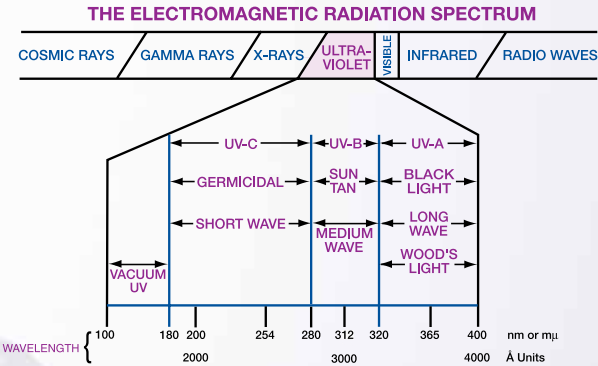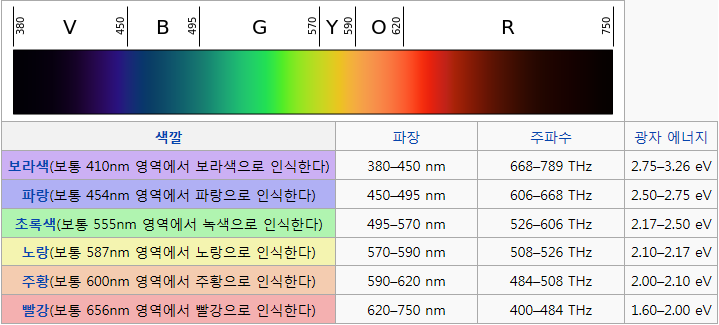UV(Ultraviolet)란 어떤 빛인가요?
페이지 정보

본문
Ultraviolet light is a natural part of our environment, most commonly found in sunlight. It is an invisible band of electromagnetic radiation just beyond the violet end of the visible spectrum. This band is generally divided into short, medium and long wavelength regions that differ in their effects on the human body.
The short wavelength region, also known as far ultraviolet, germicidal or UV-C, extends from 180 to 280nm. Although it has little penetrating power, short wave can cause severe burns to the eyes and skin. The usual artificial sources of this radiation are low pressure, mercury vapor lamps and certain other metal vapor lamps used in UV sterilization, chromatography, mineralogy, EPROM erasing, photochemical
reaction, etc.
The medium wavelength region, also known as middle ultraviolet, erythermal or UV-B, extends from 280 to 320nm. It has high penetrating power and can seriously burn the eyes and skin. The usual artificial sources of this radiation are "sun lamps" used for cosmetic or therapeutic purposes and vitamin production.
The long wavelength region, also known as near ultraviolet, black light, Wood's light or UV-A, extends from 320 to 400nm. Some people are overly sensitive to radiation in this region and may experience "blue haze" interference when viewing sources of long wave UV.
Although everyone is exposed to UV sources natural and/or artificial on a daily basis, unprotected and prolonged exposure to any form of UV light, including long wave UV, can result in cataracts and possibly cancer. Even brief exposures can be hazardous if the intensity is high enough.
The short wavelength region, also known as far ultraviolet, germicidal or UV-C, extends from 180 to 280nm. Although it has little penetrating power, short wave can cause severe burns to the eyes and skin. The usual artificial sources of this radiation are low pressure, mercury vapor lamps and certain other metal vapor lamps used in UV sterilization, chromatography, mineralogy, EPROM erasing, photochemical
reaction, etc.
The medium wavelength region, also known as middle ultraviolet, erythermal or UV-B, extends from 280 to 320nm. It has high penetrating power and can seriously burn the eyes and skin. The usual artificial sources of this radiation are "sun lamps" used for cosmetic or therapeutic purposes and vitamin production.
The long wavelength region, also known as near ultraviolet, black light, Wood's light or UV-A, extends from 320 to 400nm. Some people are overly sensitive to radiation in this region and may experience "blue haze" interference when viewing sources of long wave UV.
Although everyone is exposed to UV sources natural and/or artificial on a daily basis, unprotected and prolonged exposure to any form of UV light, including long wave UV, can result in cataracts and possibly cancer. Even brief exposures can be hazardous if the intensity is high enough.
- 이전글자외선 램프의 수명은 얼마나 되나요? 12.12.10
- 다음글교체용 UV Tube (Lamp) 속에 작은 알갱이가 왔다 갔다 하는데 그 역할은 무엇인가요? 12.09.20
댓글목록
등록된 댓글이 없습니다.


